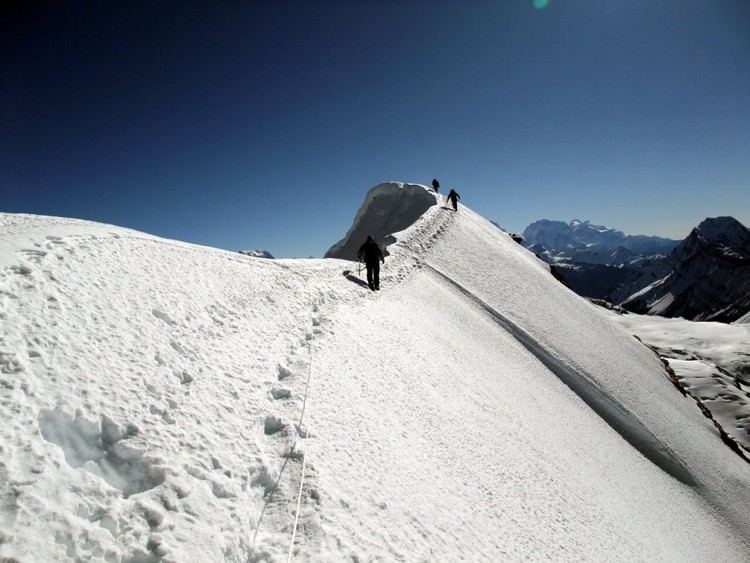 | ||
Island peak climbing 2017 everest base camp trek island climbing trekking peak
The term "Trekking Peak" is a commonly misunderstood colloquial term which may refer to a variety of types of peaks in the Himalayan Region. The term is most often associated with Group "B" NMA Climbing Peaks classified by the Nepal Mountaineering Association or easier. Some may use the term "Trekking Peak" to solely describe peaks requiring little to no technical climbing experience. Others may use the term to describe all mountains regulated by the Nepal Mountaineering Association including Group "A" NMA Expedition Peaks which may require considerable difficulties and technical climbing skill.
Contents
- Island peak climbing 2017 everest base camp trek island climbing trekking peak
- Trekking peak mera peak amphulabsta tagnepal ch
- Nepal
- India
- References
Because of the term's loose classification of peaks it can be misleading, encompassing peaks of significant varying difficulties. There is less general consensus for the use of the term in this context of Group "A" NMA Expedition Peaks.
Trekking peak mera peak amphulabsta tagnepal ch
Nepal
There is currently a total of 15 Group "B" NMA Climbing Peaks. These peaks do not exceed 7,000 metres (22,970 ft) in elevation and are can be reasonably climbed from a base camp with the possible use of a high camp. To be climbed, these peaks typically require an amount of mountaineering experience and skills and the use of specialized mountaineering equipment, such as crampons and ice axes. The easiest routes to the summits of these mountains are all challenging enough to warrant a mountaineering difficulty grade by the International French Adjectival System.
In Nepal there are numerous peaks that require no technical expertise to climb, which may also be considered trekking peaks. These peaks are not tracked by the Nepal Mountaineering Association. Many of these peaks see a substantial number of summits each year by hikers and trekkers in the region without the use of specialized equipment.The routes to the summits of these mountains may not be challenging enough to warrant a mountaineering difficulty grade by the International French Adjectival System.
India
The Indian Mountaineering Foundation describes trekking peaks closer to the true definition of trekking, where peaks have a defined route that requires less technical mountaineering skill. There peaks are open for climbing, where climbers are not required to book permits with or pay royalties to the Indian Mountaineering Foundation. Although some peaks are located in inner line, meaning close to border thus due to security reason, permissions and permits may be required from local civil or army authorities. Also, some peaks may be out of reach from foreign climbers.
The Indian Mountaineering Foundation has designated 3 trekking peaks in the Indian Himalayan Region.
